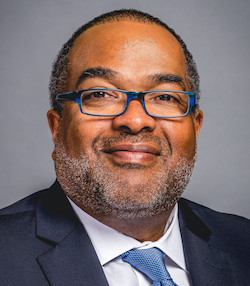
When a continuing care retirement community is experiencing success, it can be tempting to “go with the flow” and stick with existing operations, plans and programs. We know that ensuring continuing success — in fact, just remaining viable — requires a different mindset, however. One that is focused on smart repositioning. Even if our current customers are happy and might actually resist changes to their homes, we must prepare to meet the expectations of future residents. The next generation of future residents is coming, and with it, our next revenue stream. How can we ensure that we are ready?
At Applewood, a 25-year-old central New Jersey CCRC, we launched a master-planning process that emphasized input from all stakeholders, not just the CEO or director at a strategic planning meeting. We especially sought the perspective of residents — both current and future (we used our waiting list). Current residents can tell you better than anyone else what your community may need. Future residents are shopping for communities that meet their needs and desires; having insight to their “shopping list” is invaluable.
What we wanted to know
We used a tried-and-true paper survey form, and we asked about the apartment and cottage environment, community enhancements, décor improvements and upgrades, information technology improvements, program development and improvement, healthcare improvements and resident participation through committee engagement. Some of the questions were predictable. (“What features in your bathroom do you find inadequate?” and “Do you find the equipment in the fitness center to be user-friendly?”) Others were very forward-thinking. (“Would you benefit from technology that would give you the ability to schedule transportation, order meals or schedule maintenance right from your apartment?”) Our questions about program development and improvement were based on the six dimensions of wellness — occupational-vocational, physical, social, intellectual, spiritual and emotional.
At the same time, we administered an employee survey that took a different approach, seeking input on how each management or staff member believes his or her position contributes to resident satisfaction, while probing for answers on relationships involving team-building, work groups and interdepartmental activities.
We found that residents were eager to participate; our director of resident services, customer relations representative and fitness and wellness coordinator all played major roles in distributing the document. To encourage employees to complete their surveys, we entered each response received before an established deadline into a drawing for a small gift certificate.
What we did with results
So what did we do with the information we gleaned from our surveys? We took about six months to compile data and develop a five-year master plan organized into three areas: environment, IT and programming. We developed percentile scores of survey responses to guide our priorities for physical plant renovations and program improvements. During this time, we also conducted two strategy-planning meetings, reported back to our board and engaged industry-recognized IT and design consultants, realizing where we needed professional expertise.
Recommendations on apartment enhancements go well beyond new countertops and cabinets and include the less obvious (for example, open floor plans, improved lighting, ample storage and other universal design features). But we’re not just talking about simple unit upgrades; we’re pushing the envelope to put operations on track for younger-thinking retirees who are more active and tech-savvy than their predecessors. They have used laptops and smartphones, so it’s more likely they’ll look for Wi Fi connectivity throughout the community; unified communications; resident monitoring; emergency power; keyless access everywhere, including the apartments; video phones; e-book choices in the library; and available streaming video.
Having a detailed, multi-year plan for the environment and IT is critical to ensure that we aren’t making piecemeal improvements. We don’t want to get caught playing catch-up and always concluding “we can’t afford the capital expense.” In this business, you can’t afford not to spend the money required to reposition the community and maintain the overall value of the CCRC. And a very visible plan helps knowledgeable residents recognize and appreciate the merit of phased-in programs for future improvements. We are striving to be very transparent in communicating plans and updates to the community, especially to residents who are seeing other apartments updated while theirs is not. These conversations focus on the value of maintaining the overall community.
Another outcome
Another extremely rewarding outcome of our survey process is our new Engaged Living at Applewood program. It serves as a blueprint to encourage residents to engage with life and flourish. We believe that participation is the key to developing a quality community, and it’s too important to allow residents to simply “fend for themselves.” Instead, at Applewood, Engaged Living works to (re-)engage residents through actively participating in shaping their environment. We’ve even developed a follow-up survey around the six dimensions of wellness addressed in the resident survey. We ask residents to tell us things such as how optimistic they are about their future (emotional dimension) and whether they would be interested in serving on a committee that aligns with their prior careers (occupational-vocational dimension). Residents complete an initial survey to establish a baseline, and then we’ll redo the survey in a few months to gauge the effectiveness of the Engaged Living program. This exciting new program has been embraced by all our departments and is front-and-center of our marketing efforts.
Finally, was it all worth it? Bear in mind that we are in phase one, the early stages of implementing our five-year master plan, but we already have extremely encouraging results that we can attribute to the mastering plan improvements as well as Engaged Living at Applewood. In 2014, before rolling out this new program, we had 24 move-ins with an average age of 85 years. In 2015, with the new program in place, we welcomed 37 new residents averaging age 82. Those are the kinds of numbers that make me very optimistic that Applewood is positioned not just to survive, but to thrive in the future.
Keith Grady is the executive director at Applewood, a 25-year-old continuing care retirement / life plan community in Freehold Township, NJ. He has more than 30 years of experience managing retirement communities to meet the social, intellectual and healthcare needs of today’s older adults. He may be reached at (732) 303-7416.




